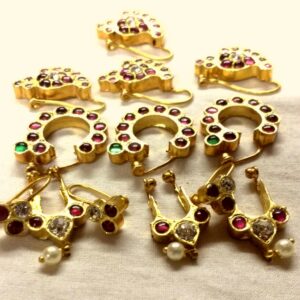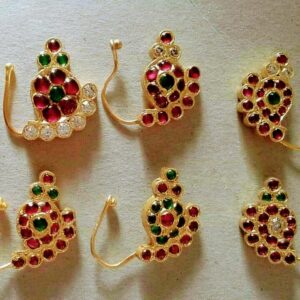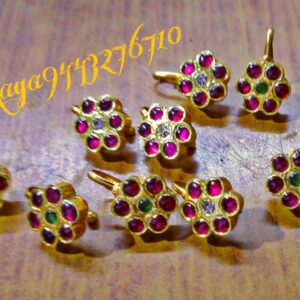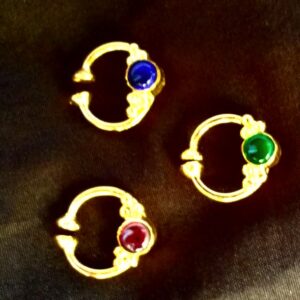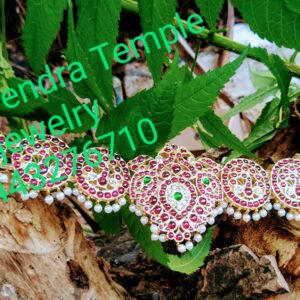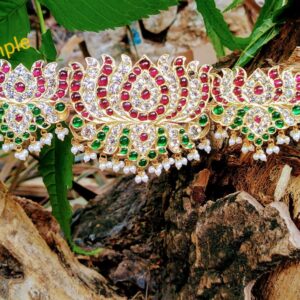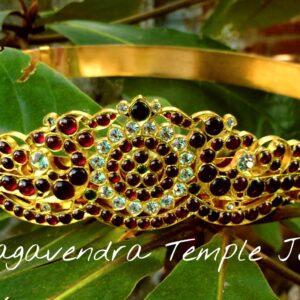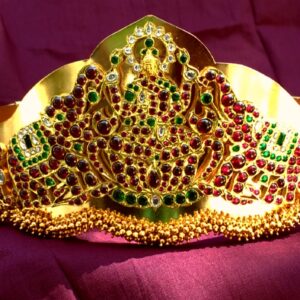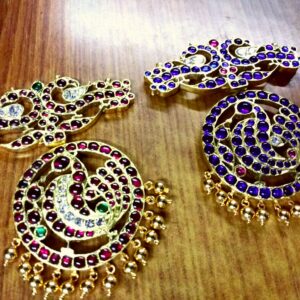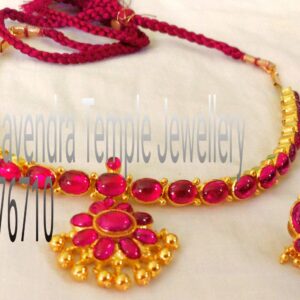Showing 205–216 of 258 results
-
Quick View
A very essential bridal accessory is the Nethi Chutti (known as Maang Tikka in the North). It is a very important and beautiful piece of ornament worn on the forehead and gives a complete look to the bride.
-
Quick View
Nose piercing is the piercing of the skin or cartilage which forms any part of the nose, normally … and among certain Native American peoples in history; the Shawnee leaders Tecumseh and Tenskwatawa, for example, had such piercings.
-
Quick View
he earliest known Jewellery was actually created not by humans (Homo sapiens) but by Neanderthal living in Europe. Specifically, perforated beads made from small sea shells have been found dating to 115,000 years ago in the Cueva de los Aviones, a cave along the southeast coast of Spain.
-
Quick View
he earliest known Jewellery was actually created not by humans (Homo sapiens) but by Neanderthal living in Europe. Specifically, perforated beads made from small sea shells have been found dating to 115,000 years ago in the Cueva de los Aviones, a cave along the southeast coast of Spain.
-
Quick View
he earliest known Jewellery was actually created not by humans (Homo sapiens) but by Neanderthal living in Europe. Specifically, perforated beads made from small sea shells have been found dating to 115,000 years ago in the Cueva de los Aviones, a cave along the southeast coast of Spain.
-
Quick View
Tamil people follow the tradition of decorating Hindu deities with gold ornaments that continue to be followed today in Hindu temples across the state. The deities (Utsavars and Moolavars) are decorated with jewels and before going out for a procession, temple priests stand the deity in front of a mirror to show them their image. Such temple jewellery is typically inlaid with diamonds and many other kinds of precious gems (navarathnam), not only gold but also silver ornaments. However, gold was, and continues to be considered the most precious and auspicious metal of all. Such ornaments are considered embodiments of the Goddess Lakshmi, with gold worn above their waist and silver ornaments below it.
-
Quick View
Tamil people follow the tradition of decorating Hindu deities with gold ornaments that continue to be followed today in Hindu temples across the state. The deities (Utsavars and Moolavars) are decorated with jewels and before going out for a procession, temple priests stand the deity in front of a mirror to show them their image. Such temple jewellery is typically inlaid with diamonds and many other kinds of precious gems (navarathnam), not only gold but also silver ornaments. However, gold was, and continues to be considered the most precious and auspicious metal of all. Such ornaments are considered embodiments of the Goddess Lakshmi, with gold worn above their waist and silver ornaments below it.
-
Quick View
Tamil people follow the tradition of decorating Hindu deities with gold ornaments that continue to be followed today in Hindu temples across the state. The deities (Utsavars and Moolavars) are decorated with jewels and before going out for a procession, temple priests stand the deity in front of a mirror to show them their image. Such temple jewellery is typically inlaid with diamonds and many other kinds of precious gems (navarathnam), not only gold but also silver ornaments. However, gold was, and continues to be considered the most precious and auspicious metal of all. Such ornaments are considered embodiments of the Goddess Lakshmi, with gold worn above their waist and silver ornaments below it.
-
Quick View
Tamil people follow the tradition of decorating Hindu deities with gold ornaments that continue to be followed today in Hindu temples across the state. The deities (Utsavars and Moolavars) are decorated with jewels and before going out for a procession, temple priests stand the deity in front of a mirror to show them their image. Such temple jewellery is typically inlaid with diamonds and many other kinds of precious gems (navarathnam), not only gold but also silver ornaments. However, gold was, and continues to be considered the most precious and auspicious metal of all. Such ornaments are considered embodiments of the Goddess Lakshmi, with gold worn above their waist and silver ornaments below it.
-
Quick View
As with other pieces of jewelry, the necklace has been an important site of decoration for the body but also of communication for the person. As valued material culture, necklaces communicate wealth, power, affiliation, prestige, levels of resources and skill, and elements of identity and position. The durability of jewelry like necklaces made of metal, glass beads, or gemstones provides an opportunity to appreciate and understand the technology, cultural practices, artistry, and aesthetics of other cultures and distant time periods.
-
Quick View
ANTIQUE JEWELLERY HISTORY – Georgian Jewellery: 1714-1837. Georgian jewellery is very rare, often featuring nature-inspired designs such as leaves and birds. … 1672-1732: Pinchbeck jewellery was introduced as an imitation of Gold. Invented by Christopher Pinchbeck, it was a mixture of alloy, copper and zinc.
-
Quick View
ANTIQUE JEWELLERY HISTORY – Georgian Jewellery: 1714-1837. Georgian jewellery is very rare, often featuring nature-inspired designs such as leaves and birds. … 1672-1732: Pinchbeck jewellery was introduced as an imitation of Gold. Invented by Christopher Pinchbeck, it was a mixture of alloy, copper and zinc.


